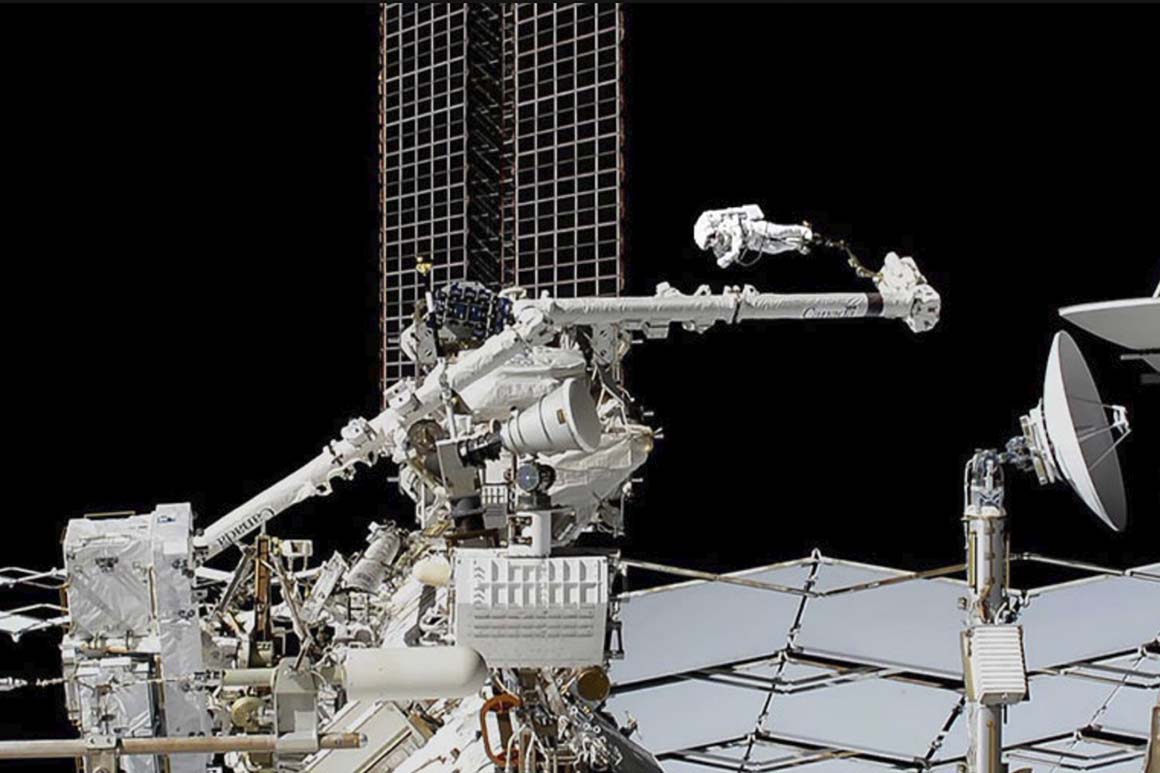
“I think those are great ways to build on the foundational approach of relying on the commercial sector to provide a service or provide hardware on more of a firm fixed price basis,” said Rush, who has led Made in Space since 2015. “That not only benefits NASA and gives them a little bit more budget clarity, that also helps the commercial sector and helps create and infuse the commercial sector with new products and services.”
Rush, who was previously a partner at PCT Law Group and worked for Masten Space Systems, also discussed the type of personalities he’d like to invite to brief the NASA advisory panel and his prediction for what the space community will look like in 2023, when his term expires.
“I deeply believe commercial crew will be the paradigm,“ he said. „We’ll see American astronauts flying on American vehicles up and back to the space station. We’ll be in the fourth quarter of getting … the first woman and the next man to the moon. That will be really, really exciting.”
This transcript has been edited for length and clarity.
What are your top priorities for the Regulatory and Policy Committee?
I hope the Regulatory and Policy Committee can … advise the administrator on how, through regulations and policy, we can help ensure that humans return to the moon to stay and leverage the commercial infrastructure that exists in the space community today to help deliver on that mission. More broadly, we’ve seen … an evolution in the way we approach contracting, regulating and doing business between civil space and the space community. I hope we can continue to help support and encourage that.
The next three years are really going to lay the groundwork not only for humanity returning to the moon to stay via Artemis, but also continuing to build on the foundations that exist … to commercialize low Earth orbit.
NASA has been an amazing engine for new technology development and infusion into the space community. … Continuing to break down barriers for the development and infusion of new technology via the space technology mission directorate and other avenues at NASA is something to be encouraged.
How can NASA partner more closely with private space companies?
We can look to what has been successful, specifically [the Commercial Orbital Transportation Services program to deliver cargo to the International Space Station], Commercial Crew, and now the Gateway Logistics Services contract that was recently awarded to SpaceX. … I think those are great ways to build on the foundational approach of relying on the commercial sector to provide a service or provide hardware on more of a firm fixed price basis. … That not only benefits NASA and gives them a little bit more budget clarity, that also helps the commercial sector and helps create and infuse the commercial sector with new products and services.
How often does the committee meet?
It’s governed by the National Advisory Committee for NASA, which historically meets about once a quarter. … Committees like the Regulatory and Policy Committee meet on at least that cadence to consider findings and recommendations that might be taken to the full committee for consideration. … Our next meeting … is May 15. We’ll have some briefings and some findings and recommendations we’ll consider. Then we’ll either pass them up or take them back for more refinement.
Any briefers you’d love to have before the committee?
It’s very subject matter driven. … We’d love to hear from folks that have experience with operating the space station to talk about how lessons learned there could feed into what the future commercial platforms might benefit from. We may call in briefers from the commercial and government sides.
How do you hope to use the committee to maintain continuity through the election?
If there is a change in administrator, that would be a give and take with whoever might be the new administrator. Certainly, my view is that we’re here to help provide our two cents for what they’re worth to try to help NASA be successful in its mission and help move humanity onto more of a spacefaring and utilizing footing.
The committee that I’m chairing is composed of commercial leaders, which is a really good thing. It serves as a conduit to provide the commercial and contractor perspective to the agency. … Having these sorts of senior advisory bodies really benefits everybody, regardless of senior level management.
What will the space community look like in three years?
I deeply believe commercial crew will be the paradigm. We’ll see American astronauts flying on American vehicles up and back to the space station. We’ll be in the fourth quarter of getting … the first woman and the next man to the moon. That will be really, really exciting.
On low-Earth orbit commercialization, I’m really hopeful we’ll see a vibrant and focused national lab on the International Space Station that’s really serving as an accelerant and enabler … to really drive experimentation and the discovery of new business lines and models.
All of those things working in concert is what I believe we will see in three years. Plus, on the technology development side, on-orbit servicing, assembly and manufacturing will really be coming into its own [and] … delivering on this long sought after vision of doing manufacturing, assembly and servicing of satellites in space.
Source: politico.com
See more here: news365.stream





